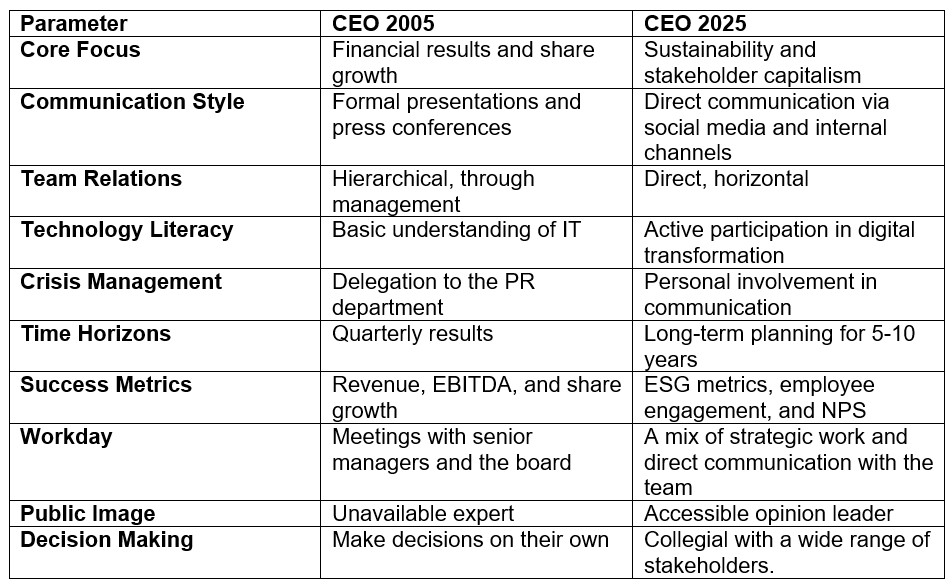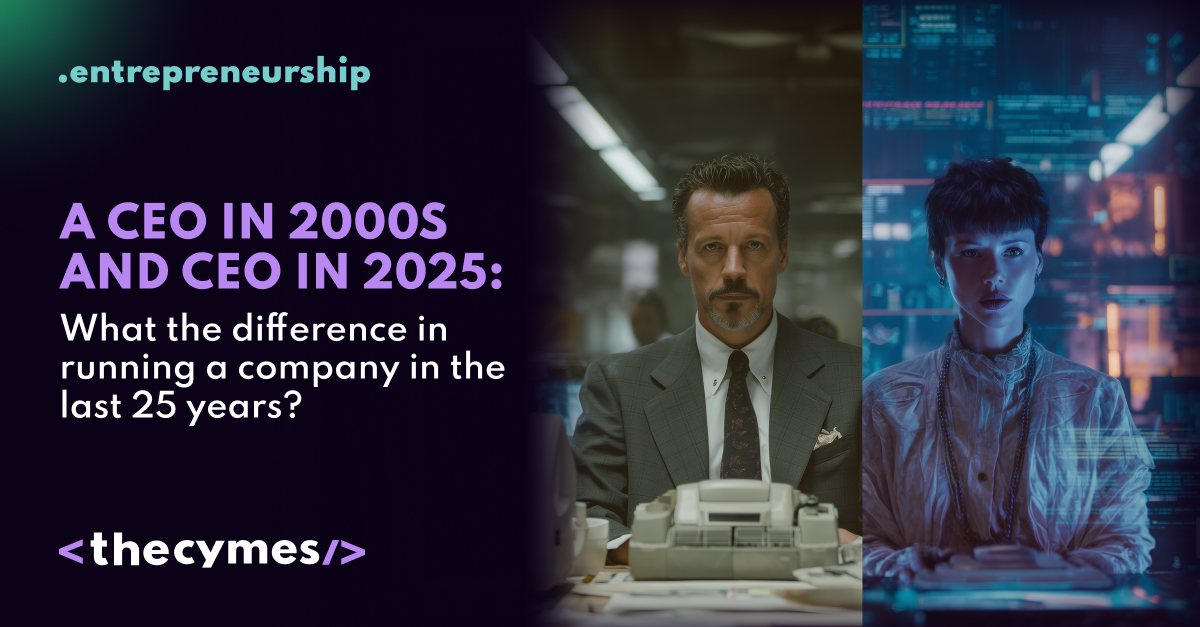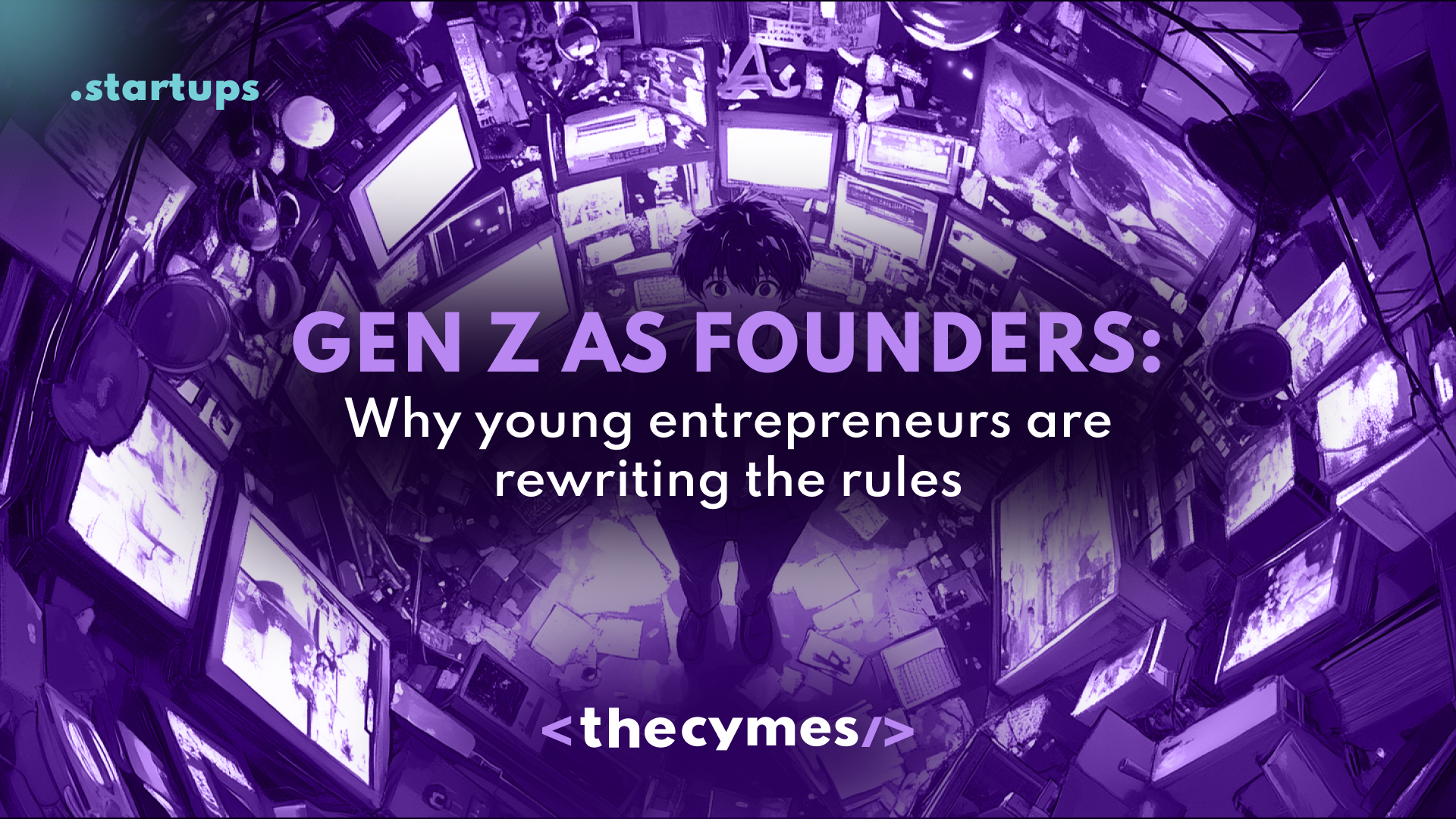Table of Content
A CEO in 2000s and CEO in 2025: What the difference in running a company in the last 25 years?
/>The role of the CEO in 2025: how the position of the company's head has changed, why strategy is no longer the main thing, and what the team expects.CEO in 2025: Why this role is no longer about power and directives
Twenty years ago, the image of the CEO was almost archetypal in popular perception. At the centre was the charismatic leader who made key decisions, held the company in an iron grip, negotiated at the highest level, and dictated the course. He was rarely in the news without a tie and was more often involved in the company's foreign policy than in internal teamwork.
Nowadays, this approach may seem anachronistic. The role of the CEO has undergone a radical transformation - not only due to technological advancements, but also because of the way modern business operates, the focus of employees, and the demands of the market.
What has changed? Briefly - everything
While in 2000 the CEO was primarily responsible for strategy and financial results, today he is also a brand ambassador, facilitator of team processes, ethics navigator, ESG, DEI, digital transformation and even an internal coach.

Among the biggest shifts is the abandonment of the authoritarian model. A good CEO in 2025 does not give orders; he or she shapes the field in which decisions are made. In this sense, he becomes something like an "energy centre": he sets the direction, but does not build every detail. He is not just responsible for KPIs, but has his finger on the pulse of the team, the brand, and the market.
What does this mean in practice?
- The CEO communicates with the team directly, not through the filters of 5 levels of management.
- He can lead AMA sessions, work in an open space, and write letters to clients.
- His communication is not about "we did", but "here's what we're struggling with".
Why the soft skills workload has increased
A research study at Harvard Business Review of 2,000 Fortune 500 CEOs revealed a shocking statistic: 80% of modern CEOs' effectiveness is determined not by strategic thinking or financial literacy, but by their communication and empathy skills. Just a decade ago, this figure did not exceed 40%.
What has changed? First of all, stakeholders have become more complex. Whereas a CEO used to work mainly with the board of directors and top managers, his audience now includes millennial investors who invest on a 3-5 year horizon and demand ESG reporting, Generation Z customers who boycott companies for unethical behaviour, and employees who expect management to make sense, not just pay.
The CEO as an operational mediator
With the growth of product teams, remote working, matrix structures, and distributed responsibility, the classic vertical "I gave an order and everyone obeyed it" no longer works. Today, the CEO is more like a mediator between departments, levelling processes, eliminating conflicts, and helping to reconcile interests.
Whereas the CEO used to go public for investors, now he or she also works for internal audiences. CEOs have to participate in information management, including informal information: explaining changes, maintaining trust, and answering questions in Slack or Zoom.
New challenges: what CEOs face in 2025
Managing hybrid teams
The pandemic has changed the way work is organised forever. CEOs must now manage teams where some employees work remotely, some in the office, and some in a hybrid mode. This requires new skills:
- Creating a unified culture across distributed teams
- Ensuring a level playing field across all work formats
- Maintaining informal connections between employees
Navigating the AI era
Every CEO today needs to understand how artificial intelligence can change their business. This includes not only technical aspects, but also ethical dilemmas:
- How automation will impact the workplace
- Which decisions can be entrusted to AI and which can be left to humans
- How to ensure algorithms are fair
ESG as a competitive advantage
Environmental, social, and governance (ESG) factors are no longer a "nice to have". Investors, customers, and employees expect companies to take real action. The CEO must:
- Integrate ESG principles into the business model
- Report progress to stakeholders
- Balance short-term profitability with long-term sustainability
Regional differences: CEOs in different cultures
America: focus on individuality
American CEOs are still perceived as the "faces" of companies. They actively use personal brands to promote their businesses. Examples: Ilon Musk (Tesla), Tim Cook (Apple), Jeff Bezos (Amazon).
Europe: focus on sustainability
European CEOs are more focused on ESG agenda and social responsibility. The regulatory environment requires them to be transparent about environmental impact and social justice.
Asia: collective leadership
In Asian companies, CEOs are more likely to operate within a collective decision-making framework. This is particularly evident in Japanese and Korean corporations, where consensus is more important than speed.
Tools for the new CEO
Digital platforms for management
Modern CEOs use advanced analytical tools to understand team sentiment, process efficiency and trend forecasting. Popular solutions:
- Slack or Microsoft Teams for direct communication
- Tableau or Power BI for data visualization
- Culture Amp for measuring employee engagement
Personal social networks
LinkedIn has become the main platform for CEOs to share insights, announce strategic decisions and engage in dialogue with audiences. Some also use Twitter, Instagram and even TikTok for more informal communication.
Mentoring and Coaching
Most modern CEOs work with personal coaches and participate in peer mentoring groups. This helps them develop emotional intelligence and get feedback from peer professionals.
Financial realities: How CEO compensation has changed
According to Willis Towers Watson's research, the structure of CEO compensation has changed dramatically over the past 10 years:
- The fixed portion of pay has declined from 40% to 25%
- The variable portion is increasingly tied to ESG metrics
- Long-term incentives now include employee satisfaction metrics
This reflects a shift in priorities from short-term financial performance to long-term sustainability and social impact.
So, who is the CEO in 2025?
The CEO in 2025 is no longer the "face of the company" or the "person at the top". It is a facilitator of processes, a face inside and outside, a team leader for team leaders, a coordinator in a world that changes every day.
This role is more complex than it was twenty years ago. But there are more opportunities. Because no one is better at influencing culture, the speed of change, and the human factor than a person who knows where they are going - and knows how to listen to those who are walking beside them.
Ultimately, the transformation of the CEO role reflects broader changes in society: from hierarchical structures to network structures, from individual heroism to collective leadership, from profit maximisation to creating value for all stakeholders.
Those who can adapt to these changes will determine the future of business. Those who remain in the past risk losing not only their positions but also the very companies they run.




